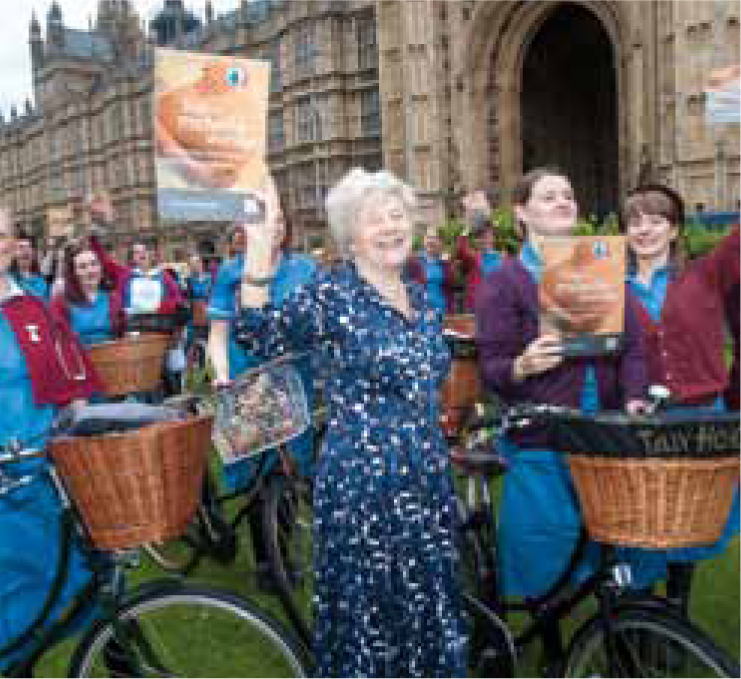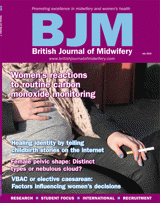
According to a report of perinatal mortality in the UK from January to December 2013, babies of mothers living in poverty have a 57% higher risk of dying than those of women living in less deprived areas, the babies of Black, Black British, Asian or Asian British a 50% higher chance of dying than those of women of White ethnic origin, and the babies of teenage mothers and mothers over 40 have a 39% higher risk of dying in the perinatal period compared with those whose mothers are aged 30–34 years (Manktelow et al, 2015).
This report of perinatal deaths demonstrates once again that social economic determinants of health must be taken into account if we are to give every baby an equal chance, not only to survive but also thrive, starting life with positive experiences of care and support for the mother–baby and father–baby and family relationships that are so important to longer-term life chances.
A number of initiatives are underway in the UK to reduce stillbirth rates. These include specific interventions to detect and prevent pathologies that carry a high risk of stillbirth, such as fetal growth restriction, fetal heart rate abnormalities in labour and change in fetal activity (SANDS, 2015).
These interventions are crucial, but will not be enough in themselves—a wider development is required of the capability of maternity services to provide appropriate, affordable, accessible and safe high-quality services to all women and their babies (White, personal communication). This requires systems of care that respond to individual and community needs, based on human rights, including universal access and respect for autonomy, dignity and fair treatment. The service needs to be capable of more personal approaches to giving public health messages that are important to the prevention of death around birth.
Midwives have the potential to make an essential contribution, particularly in the UK where there is a foundation of community-based midwifery that offers the opportunity for strong primary preventive care. To use this potential of midwifery to the full requires that we widen access to patterns of midwifery practice where the evidence shows effect of benefit, such as freestanding midwifery-led units and alongside midwifery units.
Freestanding midwifery units and, in particular, midwifery-led continuity of carer (Sandall et al, 2013) provides opportunities to give care based on and through relationships, to respond to individuals and different communities and their geographical, cultural and public health needs. These services can be a hub not only for preventive care but also provide support for family formation and parenting.
Midwifery units provide care that is safe for the babies of low-risk women and are associated with a higher normal birth rate and lower intervention rate including caesarean section rate (Birthplace in England Collaborative Group, 2011; National Institute for Health and Care Excellence (NICE), 2014).
International evidence indicates an association of midwifery-led continuity of carer with a higher normal birth rate and lower intervention rate, lower rates of late fetal loss and preterm birth, and increased cost-effectiveness (Sandall et al 2013). Continuity of care offers the opportunity for midwives to work with women, getting to know each other over time. This care that is focused on the woman and her family rather than staffing in the hospital allows response to individual personal medical and social needs: needs that can never, in fact, be separated.
Continuity of carer does not need to be restricted to low-risk women and is best organised around all women in a specific geographical area. Both midwifery units and continuity of care allows the provision of care in the woman's own community, in or near her own home. If services cannot provide such care for all women it should be provided for more vulnerable groups or areas of greatest social and economic deprivation (Rayment-Jones et al, 2015).
In the UK there is a foundation to support a shift to services capable of providing access to reliable high quality safe care, including evidence-based patterns of care, to every woman and her family. Importantly, in maternity care, while we must prevent death and disability whenever possible, we must do so in a way that recognises the particular care required for each mother and baby as they start life together. This start in life requires a positive experience and recognition of the life transition. A shift in the focus of maternity services will go a long way to giving each and every baby an equal chance at the start of life.

